Systemair Bundle
How Did Systemair Revolutionize the HVAC Industry?
Systemair, a global force in ventilation, air conditioning, and heating, has a compelling story of innovation. From its beginnings in Sweden, this Systemair SWOT Analysis reveals how they transformed the industry. Their journey is one of remarkable growth and strategic decisions that have solidified their position as a leader in air treatment.
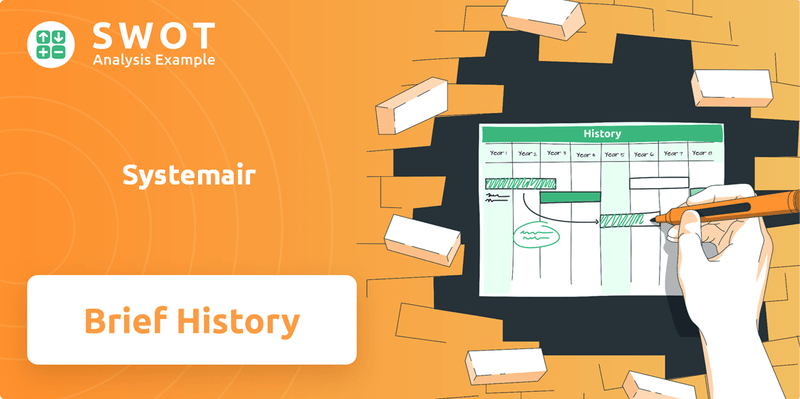
Founded in 1974 by Gerald Engström, Systemair's commitment to simplifying ventilation solutions has been a driving force. This brief history of Systemair explores the key milestones that shaped the company's evolution from a local innovator to a global powerhouse, examining its impact on the HVAC company landscape and its expansion across continents, offering insights into its market share and competitive strategies.
What is the Systemair Founding Story?
The Systemair company, a prominent player in the HVAC industry, has a rich history. Its origins trace back to a visionary founder who identified a need for more efficient and user-friendly ventilation solutions.
The company's founding story is rooted in innovation and a commitment to quality. This narrative reflects its evolution from a small Swedish enterprise to a global leader in air treatment.
Systemair's journey began on August 23, 1974. Gerald Engström, an engineer, established the company in Skinnskatteberg, Sweden, with a clear vision.
- Engström aimed to simplify ventilation systems, which were complex at the time.
- The initial focus was on developing and manufacturing circular in-line fans, a groundbreaking product.
- The company started with a 'stock-and-sell' strategy, ensuring readily available products for quick delivery.
- The early challenges included establishing manufacturing capabilities and gaining market acceptance.
Systemair SWOT Analysis
- Complete SWOT Breakdown
- Fully Customizable
- Editable in Excel & Word
- Professional Formatting
- Investor-Ready Format
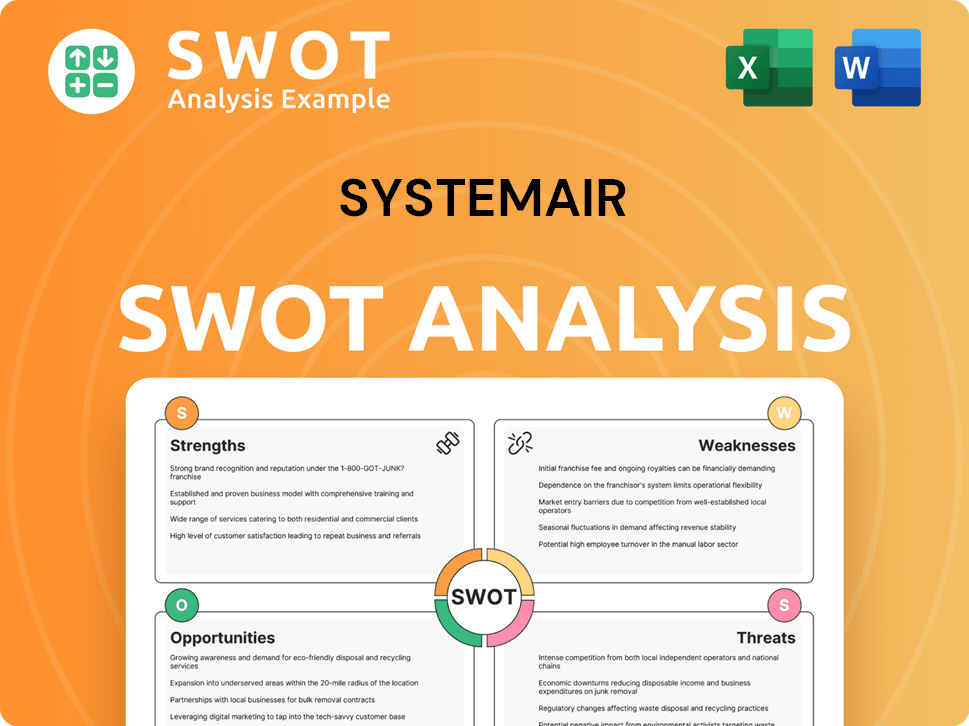
What Drove the Early Growth of Systemair?
The early growth of the Systemair company was marked by a strategic focus on innovation and market penetration. Following the success of its initial products, the company expanded its offerings to include a broader range of ventilation and air treatment solutions. This period involved significant geographical expansion and strategic acquisitions, solidifying its position in the European market.
The initial international expansion began with the establishment of a subsidiary in Norway in 1978. This was followed by expansions into other Nordic countries and Germany throughout the 1980s. By the late 1990s, the company had a strong presence in several European countries, laying the groundwork for its future global reach.
Early product diversification included a wider range of ventilation systems, such as air distribution products, air conditioning units, and heating products. This expansion of the product portfolio helped the company cater to a broader customer base and meet diverse market demands. The focus on offering comprehensive HVAC solutions was a key driver of growth.
Strategic acquisitions played a crucial role in expanding the product range and market share. The acquisition of Frico in 1992 added air curtains and heating products to the portfolio. These acquisitions allowed the company to enter new markets and strengthen its position in existing ones. The company's acquisition history is a key aspect of its growth strategy.
Early customer acquisition strategies focused on direct sales and building strong relationships with installers and consultants. The company leveraged the reputation of its innovative and reliable products to gain market acceptance. The establishment of manufacturing facilities outside of Sweden signaled a commitment to localized production and distribution. For more information on the company's values, check out Mission, Vision & Core Values of Systemair.
Systemair PESTLE Analysis
- Covers All 6 PESTLE Categories
- No Research Needed – Save Hours of Work
- Built by Experts, Trusted by Consultants
- Instant Download, Ready to Use
- 100% Editable, Fully Customizable
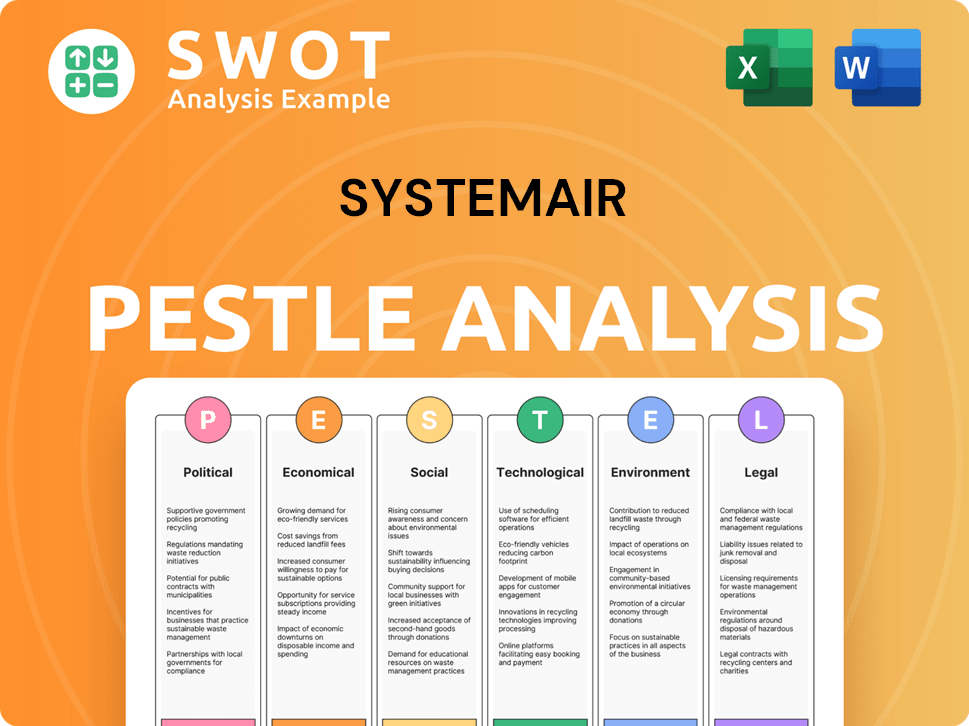
What are the key Milestones in Systemair history?
The Systemair history is marked by significant achievements and continuous expansion in the HVAC industry. From its inception, the Systemair company has grown into a global player, consistently adapting to market dynamics and technological advancements.
| Year | Milestone |
|---|---|
| 1974 | Systemair was founded in Sweden by Gerald Engström. |
| 1990s | The company expanded internationally, establishing a presence in several European countries. |
| 1999 | Systemair was listed on the Stockholm Stock Exchange. |
| 2000s | The company continued its global expansion through acquisitions and organic growth, entering new markets. |
| 2020s | Systemair focused on sustainability, innovation, and digital transformation to enhance its market position. |
Systemair has consistently emphasized innovation in its product development. A key focus has been the creation of energy-efficient ventilation units with heat recovery, aligning with environmental regulations and market demands.
Development of ventilation systems with heat recovery to reduce energy consumption. This innovation has been crucial in meeting the growing demand for sustainable building solutions.
Continuous improvement in fan technology, leading to higher efficiency and lower noise levels. These designs are often patented, solidifying the company's technological leadership.
Integration of advanced control systems to optimize the performance of ventilation units. These systems allow for better energy management and improved indoor air quality.
Investment in digital technologies to improve operational efficiency and customer experience. This includes the use of Building Information Modeling (BIM) and digital platforms for product selection and support.
Focus on developing products with a low environmental impact, aligning with the growing demand for green building solutions. This includes using sustainable materials and reducing waste.
Development of advanced air treatment solutions, including filtration and purification systems, to improve indoor air quality. These solutions are essential for creating healthy and comfortable indoor environments.
Despite its successes, Systemair has faced challenges, including economic downturns and intense competition. The company has also had to navigate the complexities of integrating acquisitions and managing rapid growth.
Economic recessions and fluctuations in the construction market have impacted demand for ventilation products. Systemair has responded by diversifying its product offerings and expanding into new markets.
Intense competition from both established HVAC company and new entrants has required continuous investment in research and development. Systemair has focused on product differentiation and customer service to maintain its market position.
Integrating numerous acquisitions has presented challenges in maintaining a cohesive corporate culture and ensuring efficient operational structures. Systemair has implemented standardized processes and training programs to address these issues.
Global supply chain disruptions, such as those experienced during the COVID-19 pandemic, have impacted production and delivery times. Systemair has worked to diversify its supplier base and improve its inventory management.
Occasional product failures have led to valuable lessons in quality control and design refinement. Systemair has implemented rigorous testing and quality assurance processes to minimize such occurrences.
Changes in environmental regulations and building codes have required continuous adaptation of product designs and manufacturing processes. Systemair actively monitors regulatory developments to ensure compliance.
Systemair Business Model Canvas
- Complete 9-Block Business Model Canvas
- Effortlessly Communicate Your Business Strategy
- Investor-Ready BMC Format
- 100% Editable and Customizable
- Clear and Structured Layout
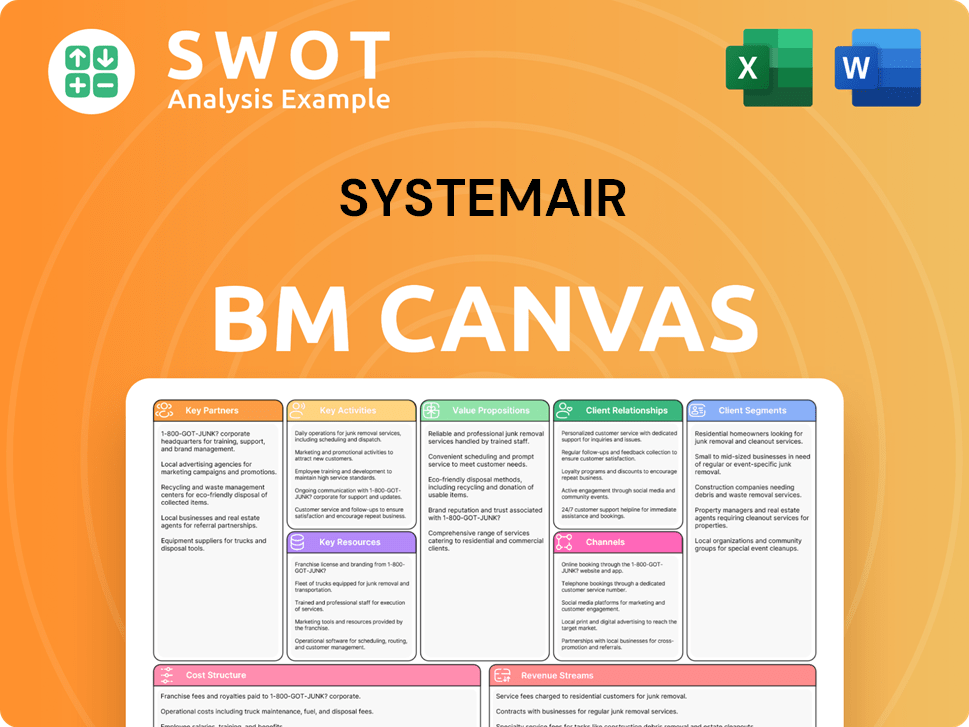
What is the Timeline of Key Events for Systemair?
The Owners & Shareholders of Systemair has a rich history marked by strategic growth and innovation in the HVAC industry. Founded by Gerald Engström in 1974 in Skinnskatteberg, Sweden, the company has expanded globally through acquisitions and organic growth, evolving from a local manufacturer to a leading international player in ventilation systems and air treatment solutions.
| Year | Key Event |
|---|---|
| 1974 | Founded by Gerald Engström in Skinnskatteberg, Sweden. |
| 1978 | Established its first international subsidiary in Norway. |
| 1980s | Expanded into other Nordic countries and Germany. |
| 1992 | Acquired Frico, broadening its product range to include air curtains and heating products. |
| 2007 | Listed on the Nasdaq Stockholm stock exchange. |
| 2011 | Acquired the US company Fantech, significantly increasing its North American presence. |
| 2014 | Celebrated its 40th anniversary, with operations in over 40 countries. |
| 2017 | Introduced the Geniox range of air handling units, emphasizing energy efficiency. |
| 2020 | Continued focus on sustainable solutions and smart ventilation systems. |
| 2022 | Strengthened its presence in the North American market through strategic acquisitions. |
| 2023 | Reported net sales reaching SEK 13.7 billion and an operating profit of SEK 932 million. |
| 2024 | Continued expansion of its global manufacturing footprint and distribution network, with a strong emphasis on digitalization and IoT integration. |
Systemair plans to further expand its market presence, particularly in emerging economies. This expansion aims to strengthen its position in key existing markets. The company is strategically positioning itself to capitalize on the growing global demand for HVAC solutions.
Innovation remains a core focus, with ongoing research and development into highly energy-efficient products and advanced air purification technologies. Systemair is committed to sustainability, aligning with the increasing demand for environmentally friendly solutions. The company is also focusing on integrated smart building solutions.
Systemair is actively pursuing digitalization strategies, including the development of connected products and services. These connected solutions offer enhanced control and data insights for building management. This move aligns with the rising trend of smart building technologies.
The increasing demand for improved indoor air quality and stricter energy efficiency regulations are key drivers for Systemair's future. The global HVAC market is estimated to reach USD 313.9 billion by 2030, with a CAGR of 6.2%. Systemair's focus on sustainability and innovation positions it well for growth.
Systemair Porter's Five Forces Analysis
- Covers All 5 Competitive Forces in Detail
- Structured for Consultants, Students, and Founders
- 100% Editable in Microsoft Word & Excel
- Instant Digital Download – Use Immediately
- Compatible with Mac & PC – Fully Unlocked
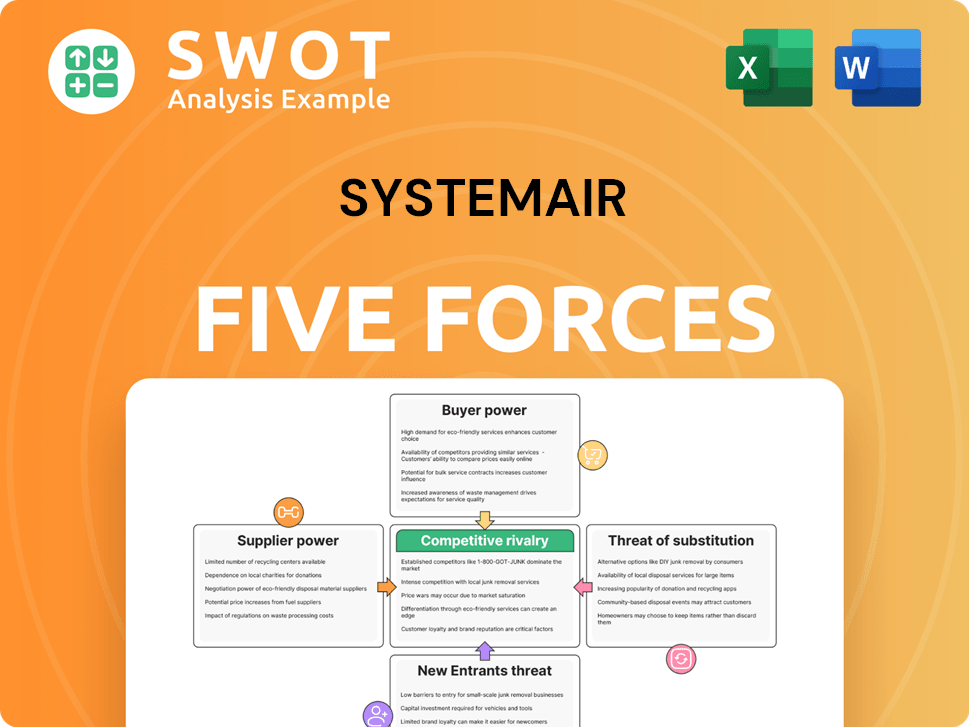
Related Blogs
- What is Competitive Landscape of Systemair Company?
- What is Growth Strategy and Future Prospects of Systemair Company?
- How Does Systemair Company Work?
- What is Sales and Marketing Strategy of Systemair Company?
- What is Brief History of Systemair Company?
- Who Owns Systemair Company?
- What is Customer Demographics and Target Market of Systemair Company?
Disclaimer
All information, articles, and product details provided on this website are for general informational and educational purposes only. We do not claim any ownership over, nor do we intend to infringe upon, any trademarks, copyrights, logos, brand names, or other intellectual property mentioned or depicted on this site. Such intellectual property remains the property of its respective owners, and any references here are made solely for identification or informational purposes, without implying any affiliation, endorsement, or partnership.
We make no representations or warranties, express or implied, regarding the accuracy, completeness, or suitability of any content or products presented. Nothing on this website should be construed as legal, tax, investment, financial, medical, or other professional advice. In addition, no part of this site—including articles or product references—constitutes a solicitation, recommendation, endorsement, advertisement, or offer to buy or sell any securities, franchises, or other financial instruments, particularly in jurisdictions where such activity would be unlawful.
All content is of a general nature and may not address the specific circumstances of any individual or entity. It is not a substitute for professional advice or services. Any actions you take based on the information provided here are strictly at your own risk. You accept full responsibility for any decisions or outcomes arising from your use of this website and agree to release us from any liability in connection with your use of, or reliance upon, the content or products found herein.